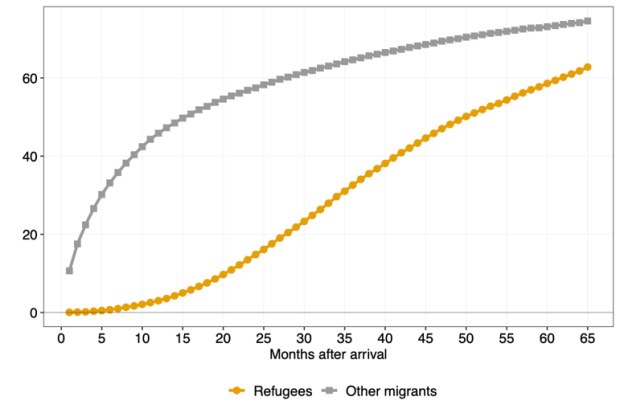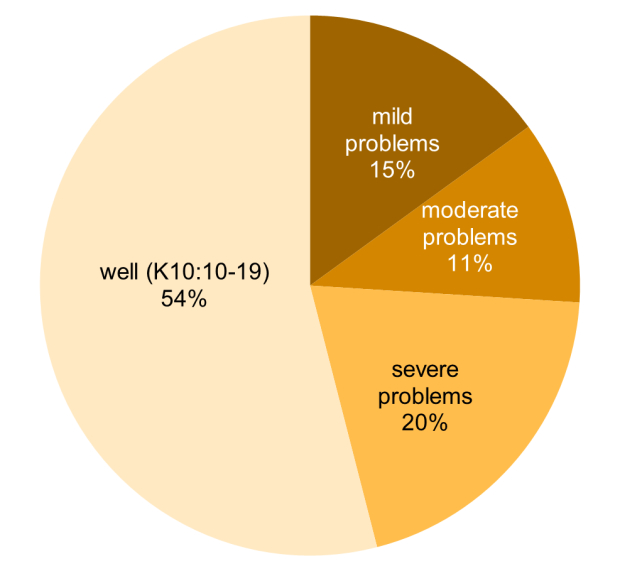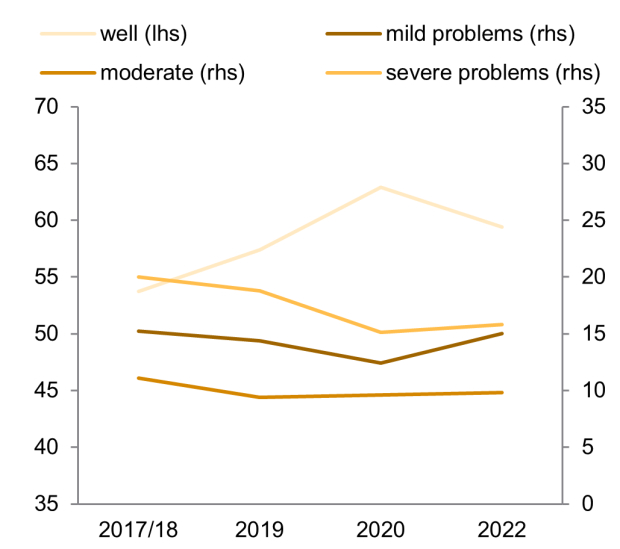How successful is the labour-market integration of refugees in Austria?
11 December 2023
Refugees enter the labour market with a delay and often hold less stable, lower-status jobs; integration programmes have proved effective
image credit: unsplash.com/Ahsanization ッ
By Michael Landesmann, Sandra M. Leitner, Stefan Jestl, Sebastian Leitner, Isilda Mara, Maryna Tverdostup
In a recently finalised research project funded by the Austrian National Bank (OeNB), wiiw economists have produced four research papers and one policy note, in which they analyse specific aspects of the labour-market integration of refugees who arrived in Austria in the big refugee wave (2015-2016) and of other migrants. The authors use two unique longitudinal databases, which provide detailed information on refugee integration over time: (i) a newly constructed database supplied by Statistics Austria (Register-based Labour Market Career data) for the period 2014-2021; and (ii) five consecutive rounds of a survey of refugees in Austria (FIMAS), conducted between 2016 and 2022.
The main findings are as follows:
- It takes refugees almost three years longer than other migrants to enter the Austrian labour market; this is due largely to the severe restrictions on labour-market access during the refugee application procedure.
- Although the type of first job is similar for refugees and other migrants, the stability of those jobs differs: the first jobs of refugees in Austria are far less stable and tend to be of low quality.
- Slow entry into the Austrian labour market and low-quality first jobs may have a long-lasting effect on the longer-term success of refugees’ labour-market integration.
- Only to a very limited extent can occupational status be transferred from the last job in the home country to the first job in Austria. Some of that status can be recouped through time spent in Austria.
- The type of job-search strategy plays an important role: when used exclusively, job search via co-ethnic social networks is actually detrimental, is associated with greater occupational downgrading between the last job in the home country and the first job in Austria, and leads subsequently to lower occupational upgrading between the first and the current job in Austria.
- However, when used in conjunction with agencies such as the Public Employment Service (AMS) or non-governmental organisations, co-ethnic social networks are of benefit.
- Every third or fourth refugee in Austria has moderate or severe – and thus clinically relevant – mental health problems. Women are at higher risk than men.
- Traumatic experiences during the migration to Austria and discrimination encountered in Austria are associated with poorer mental health.
- Proficiency in German, social and labour-market integration, and living and housing conditions all contribute to resilience and are associated with better mental health.
- Integration programmes intended to help refugees gain employment – such as the Competence Check and the Integration Year – are particularly effective among female refugees, refugees with lower educational attainment, and both younger and older refugees.
A more extensive presentation of the substantive research results and policy implications can be found in the project policy note.
Between 2015 and 2016, following escalation of the war in Syria, Austria experienced a great influx of refugees. Owing to its geographical position between the political blocs, for decades Austria has been the most important reception country for refugees and migrants in Europe. However, the refugee wave of 2015-2016 was among the largest since the Second World War. In 2015, 10 asylum applications per 1,000 inhabitants were filed in Austria (compared to 17 per 1,000 in Sweden and 6 per 1,000 in Germany); 76% of all applications in Austria were lodged by Afghans, Syrians, Iraqis and Iranians. A major challenge has been the integration of these new arrivals – and especially their integration into the labour market. In addition to offering financial independence, this also promotes social contacts with the host society, language acquisition and social recognition.
The Labour-Market Entry and Integration of Refugees and Other Migrants in Austria
In their research paper, Stefan Jestl and Maryna Tverdostup analyse the labour-market entry of refugees and other (non-humanitarian) migrants arriving in Austria in the period 2014-2016. Specifically, their paper explores the factors driving the transition into and out of the first job in Austria; the characteristics of that first job; job stability over time; and the extent to which the first job relates to future labour-market outcomes. The authors rely on the register-based labour-market career data from Statistics Austria, which combines information from several administrative registers, such as the central social security register, the unemployment register and the central population register. The data enable refugees and other migrants from low- and middle-income non-European countries to be tracked from their arrival in 2014-2016 until May 2021.
There is slower labour-market entry of refugees, yet the profile of their first job in Austria is similar to that of other (non-humanitarian) migrants
Whereas non-humanitarian migrants enter the labour market almost immediately upon arrival in Austria, it takes refugees almost three years on average to get their first job. This is due largely to the heavy restrictions placed on access to the job market during the asylum application procedure. However, the employment gap between refugees and other migrants narrows steadily over time (Figure 1), suggesting that refugees are finding their way onto the Austrian labour market. Although refugees face greater obstacles to employment, the characteristics of the first jobs held by refugees and other migrants are very similar. More than a third of immigrants enter the Austrian labour market with full-time jobs; but the majority of first jobs are in the low-wage segment and in service industries.
Figure 1 - Cumulative share of immigrants who have got a job (%), over time after arrival, in months
Notes: The graph shows the proportion of refugees and other migrants who got a job during the observational period. The entry job is defined as either full- or part-time employment, marginal employment or self-employment. Source: Statistics Austria. Own calculations and illustration.
Refugees have less-stable jobs and tend to stay longer in low-quality entry jobs
The first jobs of other migrants are more stable: they spend on average around 15 months in their first jobs, whereas refugees hold their first jobs for only around 8 months. However, when other migrants enter the labour market with a marginal job, they tend to quit it sooner than refugees, who hold down marginal jobs for as long as full-time and part-time jobs. There are important differences by level of educational attainment: highly educated other migrants enter the labour market earlier and get better first jobs than less-educated other migrants. By contrast, highly educated refugees do not have any notable advantage over less-educated refugees in terms of either initial job duration or job quality.
Among both refugees and other migrants, longer-term labour-market success depends heavily on the type of the first job
Both first jobs of higher quality (in terms of working hours and wages) and self-employment are strongly associated with longer-term job stability among refugees and other migrants alike. For both groups of migrants, a full-time entry job is, on average, associated with fewer subsequent jobs, fewer days in unemployment or inactivity, and longer spells of employment. However, for both refugees and other migrants, marginal jobs as first jobs appear to leave a long-lasting trace on employment outcomes: immigrants who take such jobs spend fewer days in full-time employment after their first jobs. Hence, less-stable initial jobs and the tendency to stay in low-quality, marginal employment for longer may have a long-lasting effect on the employment outcomes of refugees and may deter their access to stable and higher-quality jobs in the future.
OCCUPATIONAL TRAJECTORIES AMONG REFUGEES AND THE ROLE OF SOCIAL NETWORKS
In her research paper, Sandra M. Leitner applies the International Socio-Economic Index (ISEI) as a measure of occupational status to shed light on the occupational trajectories of refugees from their last job in the home country to their first and current job in Austria, and the role played in their job search by co-ethnic social networks and social networks with Austrians. In this context, she uses detailed information on different job-search strategies for the first and the current job in Austria: as well as co-ethnic and Austrian social networks, these include the Public Employment Service (AMS), non-governmental organisations (NGOs), private agents, social networks on the internet, advertisements in the printed media or online, and direct applications. These are all used not only as stand-alone strategies, but often also in combination with other strategies.
There is substantial loss in occupational status between the last job in the home country and the first job in Austria, with only moderate recovery thereafter
Her results point to a pronounced initial loss in occupational status between the last job in the home country and the first job in Austria (first transition), and only a mild recovery between the first and the current job in Austria (second transition) (Figure 2). Specifically, further calculations show that on average around 82% of each ISEI point of the last job in the home country is lost in transition, leaving only 18% that can be transferred to the first job in Austria. However, the greater the occupational downgrade between the last job in the home country and the first job in Austria, the larger the subsequent recovery. That effect is limited, though: for each ISEI point of occupational downgrade, there is a subsequent recovery of only around 0.2 ISEI points.
Figure 2 - Occupational trajectory between the last job in the home country and the first and current job in Austria
Note: Home refers to the last job in the home country; First and Current to the first and current jobs in Austria, respectively. Unconditional, weighted values are reported. Source: FIMAS+INTEGRATION, FIMAS+INTEGRATION², FIMAS+YOUTH, FIMAS+Women, own calculations.
Co-ethnic networks, when used exclusively, are detrimental along the entire occupational trajectory; however, when used in conjunction with the AMS or NGOs they are of benefit
When used exclusively, job search via co-ethnic social networks is associated with higher occupational downgrading during the first transition and lower occupational upgrading during the second transition. This is likely related to the type of job opportunities available from co-ethnic networks which is often limited and determined by the labour market situation and success of its tenured members – often anchored in the secondary segment of the labour market – and therefore often unrelated to immigrants’ previous experience or training. This is particularly relevant in the Austrian case, since social networks from the migrants’ countries of origin barely existed in Austria prior to 2015, and became established only with the refugees’ arrival in the country.
However, when co-ethnic social networks are used in conjunction with the AMS (or NGOs during the first transition only), they are beneficial and are associated with less-pronounced occupational downgrading during the first transition, and with greater occupational upgrading during the second. These findings suggest that both types of institution – the AMS and NGOs – generate important additional value added to job-search strategies that are otherwise based solely on social networks. The AMS, for instance, provides information and advice, job referrals, German language courses, training and further education courses; meanwhile, many NGOs offer job counselling services and help in learning German, adapting skills or finding jobs.
By contrast, social networks with Austrians play hardly any role in refugees’ occupational trajectories.
MENTAL DISTRESS OF REFUGEES
In his research paper, Sebastian Leitner examines the prevalence of perceived mental distress among refugees from Afghanistan, Iraq and Syria who (in the main) arrived in Austria after 2010, and the moderating effects of various stressors and supportive factors for resilience. He draws on data from the last four waves of the FIMAS refugee survey. The level of mental distress is measured by the Kessler-10 scale (K10), which is a simple measure of non-specific psychological distress. It comprises 10 questions about mental distress symptoms experienced in the four weeks prior to the interview, and ranges from 10 to 50. It lends itself to the following differentiation: well (K10: 10-19); mild form of mental distress (K10: 20-24); moderate mental health problem (K10: 25-29); and risk of a severe mental health problem (K10: ≥30).
There is a high prevalence of moderate or severe mental health problems among refugees in Austria, with women at greater risk than men
He shows that a large proportion of refugees have moderate or severe – and thus clinically relevant – mental health problems. Specifically, around 30% of refugees interviewed in 2017/2018 had moderate or severe mental health problems (Figure 3a). This number decreased over time until 2020, but increased again somewhat in 2022, indicating that the restrictions that came into effect from 2020 to 2022 due to the COVID-19 pandemic may also have had a negative impact on refugees (Figure 3b). Moreover, compared to men, women are on average at greater risk of having moderate or severe problems.
Figure 3 - Prevalence of menta health problems
3a / FIMAS+INTEGRATION: 2017/2018
3b / FIMAS waves 2-5
Note: Shares calculated applying probability weights – based on the Kessler-10 scale for measuring mental distress (symptoms experienced during the previous four weeks). A score on the Kessler-10 scale of 20-24 is interpreted as being at risk of a mild form of mental distress; 25-29 as a risk of having a moderate mental health problem; and 30 or above as a risk of a severe mental health problem at the time of the interview. Source: FIMAS surveys (interview year): FIMAS+INTEGRATION (2017/18), FIMAS+INTEGRATION2 (2019), FIMAS+YOUTH (2020), FIMAS+Women (2022), own calculations.
Refugees’ mental health is associated with important stressors and resilience factors
Traumatic experiences during their migration to Austria and discrimination encountered in Austria are associated with poorer mental health among refugees. By contrast, living in the same household as one’s partner and children, proficiency in German, being employed, having more supportive social relationships and expressing a higher level of satisfaction with the housing situation all contribute to resilience and are associated with better mental health.
HOW EFFECTIVE ARE LABOUR-MARKET INTEGRATION PROGRAMMES?
In her research paper, Isilda Mara uses matching models to evaluate the effectiveness of the participation of refugees from Afghanistan, Iraq, Iran and Syria in Austria in integration programmes intended to help them into employment. The specific programmes considered are (i) the Competence Check programme, which was introduced in the wake of the great refugee wave of 2015/2016, with the goal of assessing the skills and qualifications of refugees, determining what they need in order to acquire professional skills (or to improve existing ones) and equipping them with the skills that are in demand on the local labour market; and (ii) the (Voluntary) Integration Year, which focuses on skills assessment and work and training programmes that are open not only to those refugees already granted asylum (from 2014 onwards), but also to asylum seekers.
Integration programmes are particularly effective for female refugees, as well as for younger and older refugees
She shows that the two integration programmes particularly benefit those groups that have a weaker labour-market position. Specifically, female refugees derive greater advantage than male refugees from the two integration programmes. This is an important finding, since female refugees are generally much less likely than male refugees to be employed, due to their greater household and childcare responsibilities. Moreover, particularly positive effects can be observed for women with a low level of education.
Moreover, while younger age cohorts are found to have derived advantage especially from the Integration Year, the oldest age cohorts have benefited from participation in both Competence Check and Integration Year.
Press Releases
Related Projects
Related Publications
- wiiw Studies on the Integration of Middle Eastern Refugees in Austria, Based on FIMAS Surveys and Register-based Labour Market Career Data
- Labour Market Integration Programmes for Refugees in Austria: Do they Really Work and for Whom?
- Development of Mental Distress of Refugees in Austria During their Economic and Social Integration in 2017-2022
- Occupational Trajectories Among Refugees in Austria: The Role of Co-ethnic and Austrian Social Networks in Job Search
- The Labour Market Entry and Integration of Refugees and Other Migrants in Austria




